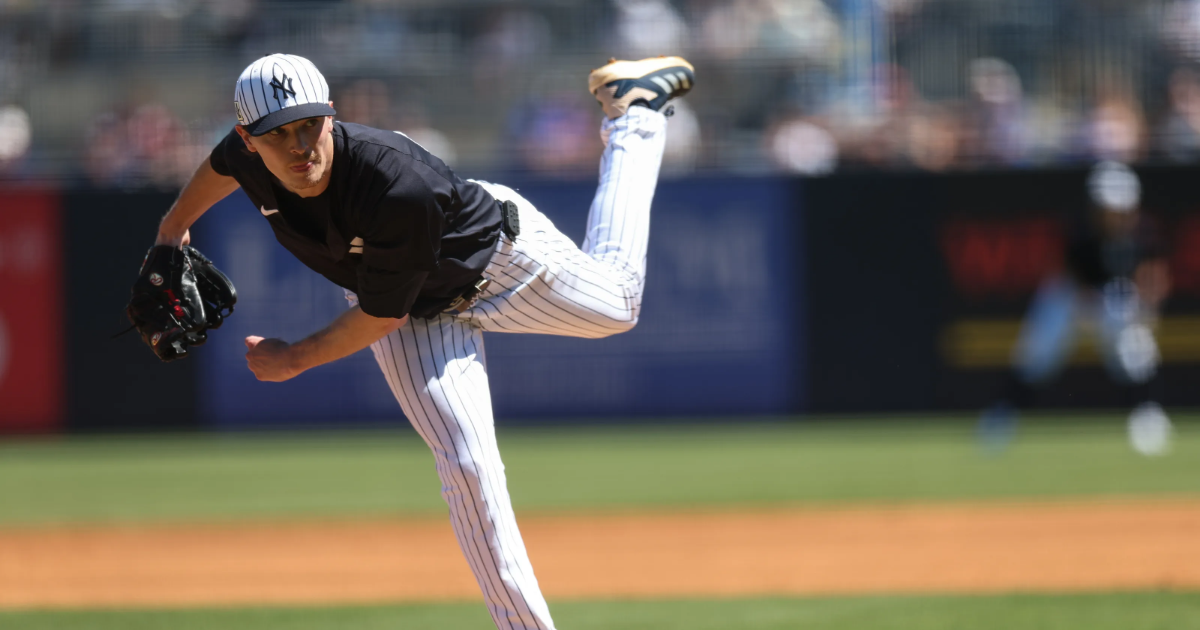
TAMPA, Fla. – To greet the 2025 season, the Yankees essentially arrived at a brand new facility.
Phase Two of a three-part re-imagining of the club’s spring training headquarters was completed in February, giving the nearly 30-year-old complex a modern makeover.
Building out toward an adjacent practice field, Yankees players suddenly had access to a big, wide training center and a double-decked dining area with private outdoor space.
And the state-of-the-art stuff inside – hydrotherapy pools and weight-training tools – rivaled anything, anywhere in baseball.
Oh, and the home clubhouse at Steinbrenner Field?
Need a break? Play the USA TODAY Daily Crossword Puzzle.
That had been transformed from a drab locker space to a plush oasis designed to give players every creature comfort, inviting them to hang around and bond as a team.
Surveying the new scene by his locker one spring training morning, Gerrit Cole was already thinking ahead to Opening Day, when a hurricane-displaced tenant was set to arrive.
“The Rays will enjoy this,’’ said Cole, lingering on the word “enjoy.’’
Yankees are visiting team in their own Tampa ballpark vs Rays
And now for the really, strange part…
This is the weekend the Yankees first arrive as visitors to their own facility.
“Obviously, it’ll feel a little weird walking into the visiting side,’’ said Yankees manager Aaron Boone, ahead of Thursday’s four-game series opener against the Rays at Steinbrenner Field.
“But I’m also looking forward to experiencing big league baseball in that environment,’’ said Boone, with GMS Field’s capacity at just over 10,000 seats.
“I’m sure it’ll be a really good atmosphere, especially in April when the weather is still really nice,’’ said Boone. “It’s division rivals – so I’m looking forward to experiencing a different atmosphere than we’re always used to.’’
Of course, that’ll be the Rays’ Kevin Cash at home in the home manager’s office, not far from where Rays players have access to made-to-order cuisine, indoor pools and a billiard table.
Meanwhile, the Yankees will be in the cramped visitor’s clubhouse, taking their meals at Max’s Café – the media dining room during spring training, with views of – well, nothing.
Cole, Giancarlo Stanton and team captain Aaron Judge were among those consulted on design elements after owner Hal Steinbrenner had approved the massive project.
“We asked anyone whether you had a year of service or 10 years in the big leagues, because they’ve all experienced something they liked,’’ said Yankees baseball operations director Matt Ferry, speaking during camp.
“We tried to get ideas from everywhere.’’
Yankees helping out a Tampa neighbor
“They did a fantastic job,’’ Cole said during camp. “The flow is great, from the training room to the locker room…it makes things more efficient.
“It feels good to have a really nice facility and for new players who come in, the word will get out.’’
At that time, the Yankees never imagined another big-league team would be granted access to their new digs, but that all changed with Hurricane Milton’s destructive path last October.
Among the billions of dollars in damage, Milton ripped the roof off Tropicana Field, leaving the Rays without a home field for the 2025 season.
That’s where Steinbrenner stepped in, offering GMS Field to the Rays for 81 home games this year – an arrangement that moved the Yanks’ Class A Tampa Tarpons club to their nearby minor league headquarters.
In exchange, the Yankees received some infrastructure upgrades charged to the Rays, including lighting at Steinbrenner Field and the Himes Avenue complex where the Tarpons play.
At least the Yankees will have a distinct advantage, beyond the thousands of their own fans in attendance.
Steinbrenner Field has the same dimensions as Yankee Stadium, though the Gulf Coast winds can impact how the ball carries.
“I think people are still trying to make those formulations,’’ Boone said of how the ball travels during the spring and summer months at GMS Field.
“I’m just looking forward to being in a different environment,’’ said Boone, away from the Trop, with its gloomy interior and oddly placed catwalks that sometimes interfered with play.
But at least its tilted dome – when in place – prevented rain outs.



